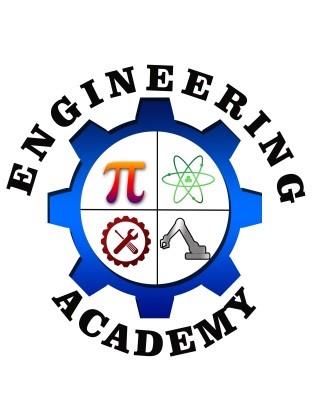-
The Engineering Academy curriculum explores principles of engineering, and provides content in the fields of Materials Processing, Civil Engineering/Architecture, Engineering Robotics, Engineering Design and Development, and other topics. Students wishing to participate in the Engineering Academy should take Design and Drawing for Production (DDP) during their freshman year. Students will learn transferable skills and knowledge with a focus on the Engineering industries. EA members will participate in industry-sponsored activities including field trips, shadow days, classroom speakers, and may earn college credit for courses.
Academy of Engineering
-
Ninth Grade
- Design and Drawing for Production (DDP) Pre-Requisite to EA program
Design and Drawing for Production Course Information
Credit: 1 unit can be used to satisfy the Art/Music requirement Length : 40 weeks
DDP provides you with the opportunities to be creative and to apply your decision-making and problem-solving skills to design and solve problems. You'll use powerful computer hardware and software to develop 3-D models or solid renderings of objects. Using a Computer Aided Design System, you will learn the product design process through creating, analyzing, rendering and producing a model. This course is an introduction to the universal language of technical drawing. Through the mastering of this language, utilizing the computer, students will be able to express technical ideas with speed, clarity, and exactness. Designing and Drawing for Productions is a vehicle for world-wide industrial communications and an integral step in the process for designing and producing goods. Students will develop spatial visualization by solving practical design problems. The ideas become working drawings and from the drawings students are encouraged to make scale models of their solution. Thereby, the process of sketching ideas, drawing details of all parts, and the actual production completes the design cycle.
-
Tenth Grade
Materials Processing I
Credit: 1/2 Unit Length: 20 Weeks
Through hands-on activities, demonstrations
and assessments, the students will gain
knowledge, skills and abilities that will
enable them to construct small projects.
Students build projects that they are able to
bring home. Students will be given
instruction in the safe operation of
woodworking machine tools, such as the
table saw, surface planer, joiner, scroll saw,
band saw, power sander, lathe and drill
press. Students will also learn machine set-up with an emphasis on safety.
Materials Processing II
Credit: 1/2 Unit Length: 20 Weeks
Prerequisite: Materials Processing I
This hands-on intermediate woodworking
course is a continuation of Material
Processing I with a strong emphasis on
safety, accuracy, craftsmanship in the
finished product. Students will build upon
the knowledge previously acquired to
develop processes for design and fabrication
of more complex projects. This class
emphasizes teamwork, creativity and
craftsmanship. Students may have to
provide their own materials for their final
project. -
Eleventh Grade
Civil Engineering & Architecture
Credit: 1 Unit Length: 40 Weeks
This course provides an overview of the
fields of Civil Engineering & Architecture,
while emphasizing the interrelationship and
dependence of both fields on each other.
Students use state of the art software to
solve real world problems and communicate
solutions to hands-on projects and activities.
This course covers roles of civil engineers
and architects, project planning, site
planning, building design and project
documentation and presentation.
Engineering and Robotics
Credit: 1 Unit Length: 40 Week
Engineering and Robotics is a high
school-level survey course of engineering.
The course exposes students to some of the
major concepts that they will encounter in a postsecondary engineering course of study.
Students have an opportunity to investigate
engineering and high tech careers.
Engineering and Robotics gives students the
opportunity to develop skills and
understanding of course concepts through
activity, project, and problem-based (APPB)
learning. Used in combination with a
teaming approach, APPB learning challenges
students to continually hone their
interpersonal skills, creative abilities, and
problem solving skills based upon
engineering concepts. It also allows students
to develop strategies to enable and direct
their own learning, which is the ultimate goal
of education. To be successful in Engineering
and Robotics, students should be
concurrently enrolled in college preparatory
mathematics and science. -
Twelfth Grade
Engineering Design and Development (EDD)
Credit: 1 Unit Length: 40 Week
In this course you will work as part of a team
to design a solution to an engineering
problem. The problems will involve a wide
range of engineering applications (e.g.,
school robot-mascot, automated solar water
heater, remote control hovercraft, to name a
few ideas. You will apply the principles you
developed in the previous courses. Each
team will be responsible for delivering
progress reports and making final
presentations to an outside review panel.
The completed portfolio will be invaluable
when you begin applying to colleges.
Related Documents
-
High School students that are considering exploring an Academy program or would like to receive information on joining an Academy as a freshman should contact their school counselor at the start of the school year. Additional information on joining an Academy can be obtained by calling 716-677-3318.


